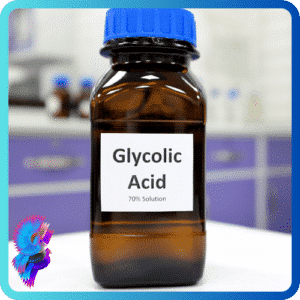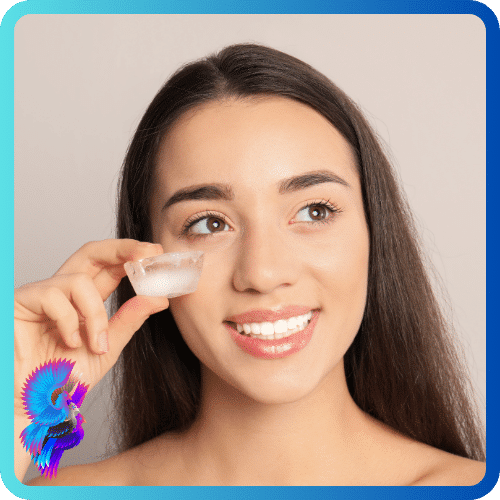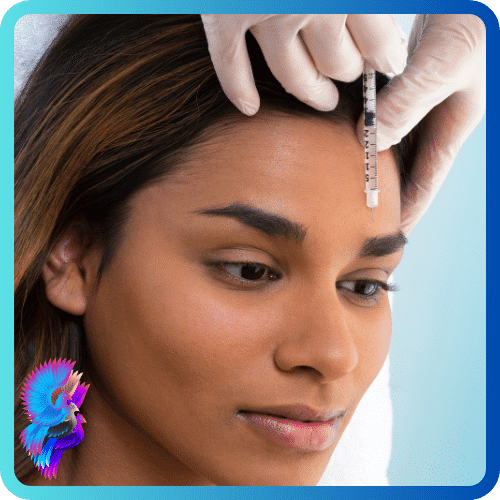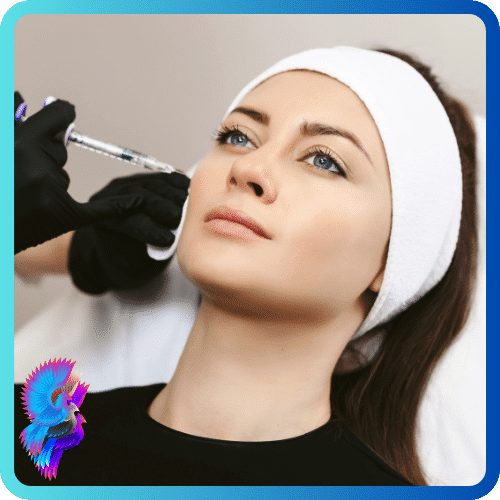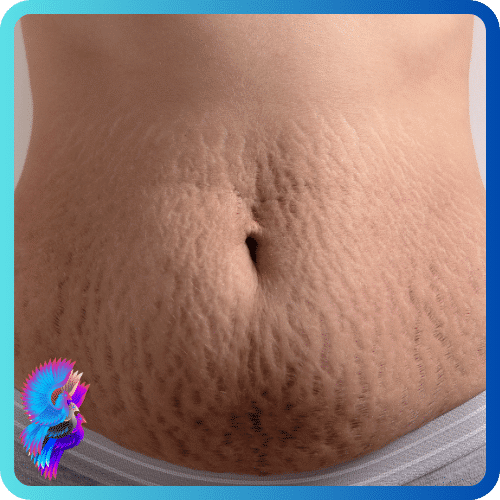Advertisements
An Optimal Resolution for Dermatological Concerns
The glycolic peel is a cosmetic procedure that involves the application of a chemical solution containing glycolic acid to the skin.
If one is seeking to enhance the tone, texture, and overall appearance of their skin, it may be advisable to contemplate the utilization of a glycolic peel.
A glycolic peel refers to a form of chemical exfoliation employing glycolic acid, an alpha-hydroxy acid (AHA) sourced from sugar cane, sugar beets, and other organic materials.
Glycolic acid possesses anti-inflammatory and antioxidant characteristics that have the potential to provide advantageous effects on diverse skin disorders, including acne, acne scars, ingrown hairs, stretch marks, and hyperpigmentation.
What is the mechanism of action of a glycolic peel?
The mechanism of action of a glycolic peel involves the exfoliation of both the superficial and intermediate layers of the skin, thereby eliminating expired skin cells and extraneous matter.
Due to its low molecular weight, glycolic acid can easily pass through the layers of skin, making it easier to dissolve the glue-like substances that hold dead skin cells together.
Additionally, it aids in the clearance of pores by eliminating surplus oil within the hair follicles.
In addition, it has been found to enhance the synthesis of collagen, thereby promoting skin suppleness and diminishing the visible manifestations of aging.
What are the advantages associated with the application of a glycolic peel?
A glycolic peel has the potential to provide various advantages for the skin, contingent upon its kind and condition.
Several advantages can be identified:
The utilization of glycolic peels has been found to be effective in mitigating the presence of blackheads, whiteheads, and pimples through the process of exfoliating the skin and diminishing inflammation, hence contributing to the reduction of acne and acne scars.
In addition, they possess the ability to mitigate the appearance of acne scars through the promotion of skin rejuvenation and the restoration of uniformity in skin pigmentation.
The prevention of ingrown hairs and scarring can be achieved through the utilization of glycolic peels. These peels effectively maintain pore clarity and hinder the curling of hair back into the skin.
These treatments may be able to lessen the appearance of ingrown hair scarring by reducing hyperpigmentation and improving the skin’s texture.
The use of glycolic peels, which have the potential to increase collagen synthesis and improve skin texture, can facilitate the treatment of stretch marks. White stretch marks, being more mature and resistant to treatment compared to red stretch marks, demonstrate enhanced efficacy when subjected to the aforementioned intervention.
The lightening of dark spots can be achieved through the use of glycolic peels, which have been found to be effective in reducing the appearance of hyperpigmentation resulting from sun exposure, hormone fluctuations, or skin injury. The process of melanin production inhibition, which is in charge of giving the skin its color, achieves this.
What are the recommended steps for preparing for a glycolic peel?
Prior to undergoing a glycolic peel, it is advisable to seek consultation from a dermatologist or a qualified aesthetician in order to ascertain your suitability for this particular procedure.
It is advisable to abstain from utilizing any items that encompass retinoids, benzoyl peroxide, salicylic acid, or other exfoliating agents for a minimum of one week prior to undergoing a peel procedure.
It is advisable to refrain from excessive sun exposure and consistently apply sunscreen as a preventive measure against potential harm to the skin.
Anticipated outcomes of a glycolic peel procedure:
A glycolic peel is often administered in a professional environment by a medical practitioner or a trained skincare specialist.
The method generally has a duration ranging from 15 to 30 minutes and encompasses the subsequent series of steps:
The skin undergoes a cleansing and degreasing process using an alcohol-based solution.
The skin is topically treated with a glycolic acid solution, typically ranging in concentration from 20% to 70%, using either a cotton pad or a brush.
The solution is applied topically and permitted to rest on the skin for a brief duration, which varies based on the desired level of penetration and the skin’s sensitivity.
The solution is subjected to neutralization by either water or a neutralizing agent, followed by rinsing with cool water.
Moisturizers and sunscreens are topically applied products that serve the purpose of soothing and safeguarding the skin.
What are the potential adverse effects associated with the use of a glycolic peel?
The safety and tolerability of a glycolic peel are generally regarded as satisfactory for the majority of individuals.
Nevertheless, certain potential adverse effects may arise, namely:
The individual may experience mild sensations of stinging, burning, or itching either during or following the peel procedure.
The observed symptoms include erythema, edema, or localized inflammation in the area subjected to treatment.
The occurrence of dryness, flaking, or peeling of the skin is observed.
There is an observed elevation in susceptibility to the effects of sun exposure.
An allergic reaction or infection, albeit rare, may occur.
Typically, these adverse effects exhibit a transient nature and diminish over a span of several days or weeks.
In order to reduce the occurrence of adverse effects, it is advisable to adhere to the aftercare recommendations provided by your healthcare professional.
What are the recommended post-treatment skincare practices for individuals who have undergone a glycolic peel?
Following a glycolic peel, it is imperative to implement proper skin care practices in order to get optimal outcomes and minimize the risk of problems.
Several suggestions include:
It is advisable to minimize direct contact with sunlight and consistently apply sunscreen with a sun protection factor (SPF) of 30 or above on a daily basis.
It is recommended to refrain from utilizing harsh or abrasive skincare products for a minimum of one week.
To effectively hydrate and soothe the skin, it is recommended to utilize a mild moisturizer in conjunction with a soothing substance, such as aloe vera gel.
It is advisable to refrain from engaging in behaviors such as picking, scratching, or rubbing the skin, as these actions have the potential to result in scarring or infection.
To effectively nourish the skin internally, it is recommended to consume an ample amount of water and maintain a balanced dietary intake.
What is the recommended frequency for receiving glycolic peels?
The frequency at which one should receive a glycolic peel is contingent upon individual factors such as skin type, current state, and desired outcomes. In the realm of dermatological care, it is commonly advised to have a glycolic peel at intervals of approximately 4 to 6 weeks to sustain the effects achieved, or at intervals of 2 to 3 weeks for a more rigorous and concentrated treatment approach.
Nevertheless, it is imperative to seek guidance from a healthcare professional prior to arranging subsequent peel treatments in order to prevent excessive exfoliation or harm to the skin.
Advertisements

